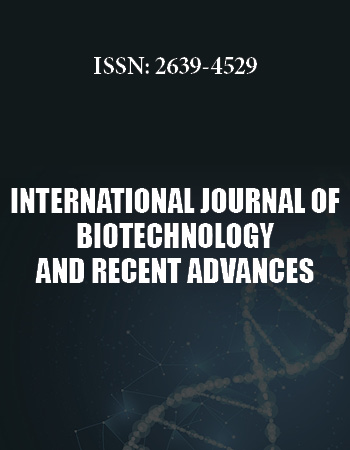European Microbiology Research Conference
December 3-4, 2018 Valencia, Spain
Toxicity and Distribution of Tetrodotoxin-Producing Bacteria in Puffer Fish Collected from the South Andaman Sea of India
Central Marine Fisheries Research Institute, India
Tetrodotoxin (TTX) is a non-protein neurotoxin that was mainly isolated from many species of puffer fishes. TTX isolated from the diverse groups of organisms were totally unrelated to each other phylogenically. Four cases of food poisoning in Thailand after the consumption of horseshoe crab eggs, Carcinoscorpius rotundicauda, were reported, which was later confirmed to contain TTX. The TTX occurrence in gastropod was first reported in Japan, due to the consumption of a Trumpet shell, Charoniasauliae caused the paralytic food poisoning (PFP) in 1979, and the responsible toxin was identified as TTX. TTX was isolated from the Japanese Ivory shell, Babylonica japonica. Later, Noguchi (1982) put forward that the exogenous origin of TTX among animals through the food chain, the trumpet shell toxification through the consumption of the toxic star fish, Astropecten polyacanthus, so it was not support proposal of endogenous origin of TTX. Also TTX was being isolated from variety of other animals including xanthid crabs, Atergatiusfloridus, Atergatopsisgermaniniand Zosimusaeneus, the marine flatworms, Planoceramultitentaculata, the marine arrow worms (Zooplankton) such as Eukrohina hamate, Parasagittaelegans and Flaccisagitascrippsae, which also play an important role in the food web to intoxicate the higher. Most of the TTX-bearing animals mentioned above have one common feature that they all belong to marine environment except the salamander and frogs and they are inter-related within a marine food-web system, in which TTX is accumulated and concentrated from lower to higher organisms through the food chain. Based on the above suggestion, that bacteria may be the primary source of TTX. In 1980, the first TTX-producing microorganisms were isolated and identified from TTX-bearing organisms by the Japanese scientists. Noguchi et al. (1983), succeeded in isolating four bacterial strains (Vibrio sp.) from the intestine of Xanthid crab, Atergatiusfloridus, and Yasumoto et al. also isolated a bacterial species Pseudomonas sp., from the marine red calcareous algae, Jania sp.. Therefore, many TTX-producing bacteria are isolated from different TTX-bearing organisms. There were totally seven dominant pure bacterial strains that are isolated from different organs of puffer fishes and only five of them designated (Table-5.1), as although biochemical tests revealed the general characteristics of the bacterial strains. All the isolates showed 99% similarity with the available database sequences and then the phylogenetic trees, were constructed with the help of sequencing data. The five purified strains were Isolates 1 with Bacillus humi; Isolates 2 with Kocuriaplaustris; Isolates 3 with Pseudomonas mendocina; Isolates 4 with Pseudomonas stutzeri and Isolates 5 with Staphylococcus haemolyticus. In the LC50 data, the effect of different concentrations of five isolates viz 1000ppm, 500ppm, 250ppm, 125ppm, 62.5ppm and 32.25ppm were evaluated against Aretima bioassay. The highest Artemiamortality was found in 1000ppm concentration and the lowest mortality was recorded at 32.25ppm. The increase in concentration of TTX-producing bacteria sample was found to be increase the total mortality of Artemia. EPA Probit Analysis Program used for calculating LC50 value. The result of LC50 value, Isolates 1 was 209.159µg/ml, Isolates 2 was 317.007µg/ml, Isolates 3 was 260.365µg/ml, Isolates 4 was 149.793µg/ml and Isolates 5 was 150.024µg/ml. The purified strains, using the phenotypic characteristic as well as some additional physiological and biochemical test for genus level identification, were compared with results obtained from the 16s RNA sequencing. For the nucleotide sequence accession numbers, the partial 16s derived in this study have been deposited in Gen Bank under the accession numbers KP324953, KP324952, KP324955, KP324954 and KP324951.


